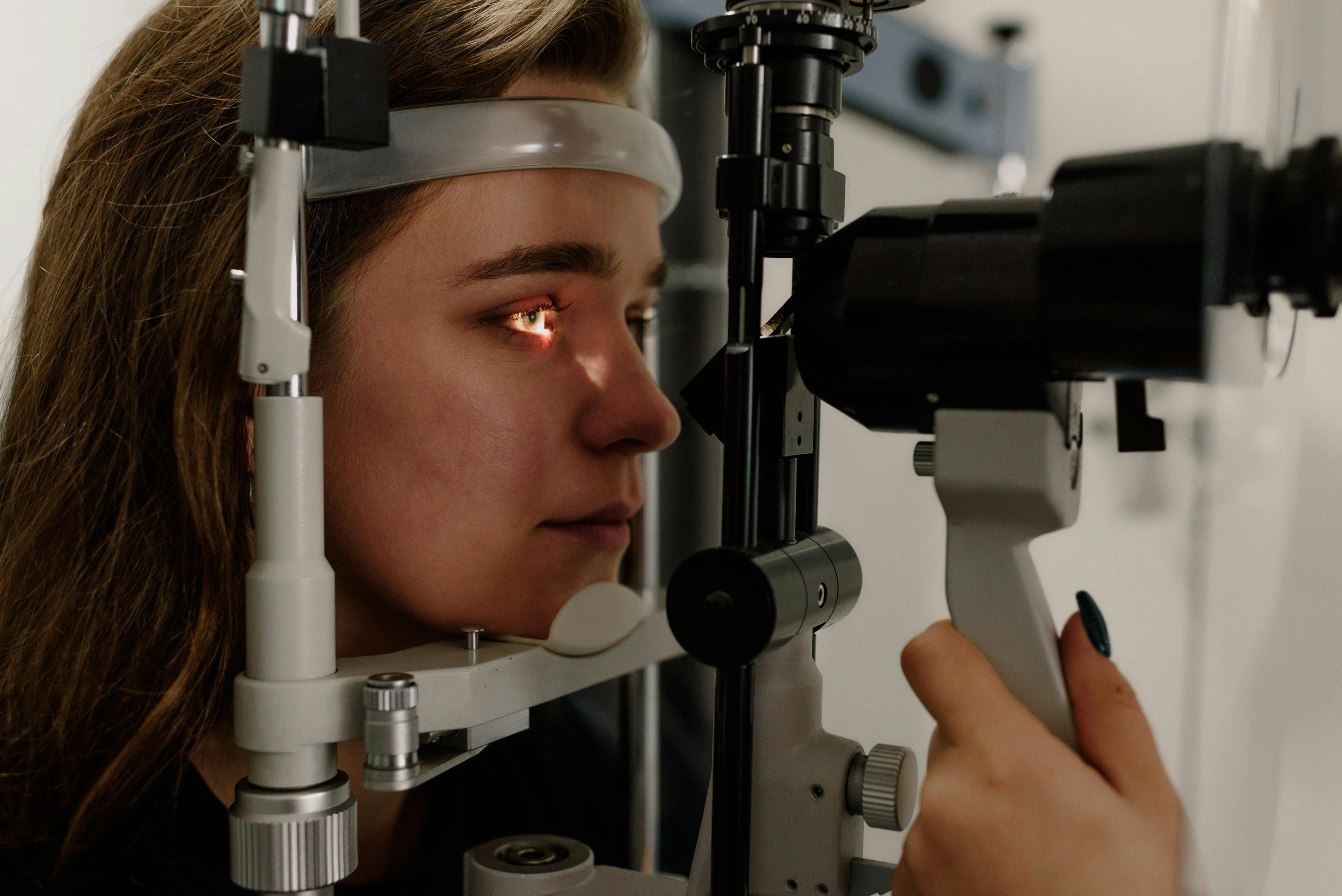
Navigating the World of Job Testing: Unveiling the Benefits, Pros, and Cons
At its core, job testing aims to provide employers with valuable insights into a candidate's aptitude, knowledge, capabilities, and potential for success in a particular role. The primary objective of such assessments is to ensure a mutually beneficial fit between the organization and the employee. Through testing, employers are able to make informed decisions based on concrete evidence rather than relying solely on resumes or interviews.
Job testing encompasses various assessment methods, including cognitive ability tests, personality assessments, skills tests, and situational judgment tests. Cognitive ability tests measure a candidate's problem-solving skills, critical thinking abilities, and decision-making aptitude. Personality assessments aim to understand a candidate's behavioral traits, such as their work style, communication approach, and response to workplace scenarios. Skills tests evaluate specific job-related proficiencies necessary for success in a particular role. Situational judgment tests simulate realistic work situations to assess how candidates manage challenges and interact with others.
The reasons for conducting job testing are manifold. Firstly, it allows employers to identify top candidates who possess the necessary qualifications and competencies required for the job. Testing acts as an objective evaluation method that ensures standardization across all applicants and eliminates biases that might occur during subjective assessments.
Secondly, job testing aids in predicting a candidate's future performance within the organization by shedding light on their strengths, weaknesses, and areas for development. By examining various attributes through assessments, employers gain valuable information about an individual's potential fit within their team or department.
Another vital aspect of job testing is enhancing the overall recruitment process by reducing uncertainty and increasing confidence in hiring decisions. Selecting candidates based on verifiable and valid test results significantly lowers the risk of mismatches between the job requirements and employee capabilities. Ultimately, this helps streamline the hiring process, saving time and resources by focusing efforts on truly suitable candidates.
In conclusion, the essence of job testing lies in its ability to provide employers with a comprehensive understanding of a candidate's abilities and potential for success. By harnessing various assessment methods, it enables organizations to make informed decisions, predict future performance, and improve overall recruitment processes. In an increasingly competitive job market, test-driven evaluations serve as valuable tools in matching the right individuals with the right positions.
 Unveiling the Benefits: How Job Testing Fosters Career Alignment and GrowthUnveiling the Benefits: How Job testing Fosters Career Alignment and Growth
Unveiling the Benefits: How Job Testing Fosters Career Alignment and GrowthUnveiling the Benefits: How Job testing Fosters Career Alignment and GrowthJob testing, an essential aspect of talent acquisition and human resource management, holds immense significance in fostering career alignment and growth. This systematic approach involves evaluating candidates' skills, abilities, and personality traits against job requirements to determine their suitability for a particular role within an organization. By doing so, job testing brings forth numerous advantages for both the potential employee and the employer.
Firstly, job testing plays a crucial role in ensuring career alignment. By assessing candidates' competencies and aptitudes, organizations can effectively match individuals with roles that align with their skills and passion. This alignment is vital as it enables employees to utilize their strengths and thrive in their positions, resulting in higher job satisfaction and productivity. When individuals feel connected to their work, they are more likely to excel and grow professionally.
Moreover, job testing aids in identifying potential gaps in knowledge or talent. By conducting tests that target specific competencies required for a specific position, organizations can gain valuable insights into individuals' abilities. This not only helps in making informed hiring decisions but also allows employers to devise development strategies tailored to employees' skill gaps. By addressing these gaps through training programs or mentorship initiatives, organizations foster career growth by equipping employees with the necessary tools to excel in their roles.
Another advantage of job testing is its ability to predict performance. Through a variety of assessments like cognitive tests, personality inventories, or situational judgment tests, employers can evaluate not only technical skills but also personalities and soft skills critical for success within a particular role or company culture. This predictive capability helps organizations select candidates who have the highest potential for success and reduces the risk of poor hiring decisions. Consequently, this leads to improved performance outcomes and increased job satisfaction for employees.
Furthermore, job testing contributes to fair and unbiased selection processes. Utilizing standardized test procedures reduces the influence of personal biases or subjective judgments during recruitment. By focusing solely on each candidate's capabilities as demonstrated through test results, organizations are more likely to hire based on merit rather than external factors such as personal connections or favoritism. This fairness in selection promotes equal opportunities for all candidates and enhances diversity within the workforce.
Overall, job testing holds immense value in fostering career alignment and growth. Its ability to match candidates with roles that suit their skills, identify areas for improvement, predict performance, and promote fair selection processes are just a few of its benefits. By incorporating job testing into their hiring practices, organizations provide employees with a foundation for success and enable them to embark on a promising career path aligned with their capabilities and aspirations.
 The Advantages of Pre-Employment Testing for EmployersPre-employment testing offers employers a variety of invaluable advantages throughout the hiring process. Reshaping recruitment strategies in numerous industries, these assessments have become an essential tool for evaluating job candidates efficiently and effectively.
The Advantages of Pre-Employment Testing for EmployersPre-employment testing offers employers a variety of invaluable advantages throughout the hiring process. Reshaping recruitment strategies in numerous industries, these assessments have become an essential tool for evaluating job candidates efficiently and effectively.First and foremost, pre-employment testing allows employers to assess a candidate's aptitude and potential for success in a particular role. Such evaluations go beyond the information provided in resumes or interviews, providing additional insights into an applicant's skills, knowledge, and competencies. Employers can gain a clearer understanding of how well candidates will fit within their organization and perform essential job functions.
Moreover, these tests assist employers in identifying the most qualified candidates for open positions objectively. By eliminating bias and subjectivity from the hiring process, employers can make fairer and more informed decisions based on data-driven assessments. This helps to cultivate a more diverse and inclusive workforce while ensuring that top-quality talent is not overlooked.
In addition, pre-employment testing allows employers to streamline their selection process by identifying unsuitable candidates early on. This not only saves valuable time but also reduces costs associated with lengthy recruitment procedures. By catching any red flags or concerns early, employers can avoid potentially costly hiring mistakes down the line.
Furthermore, psychometric testing can provide valuable insights into a candidate's personalities and behavioral traits essential for job performance. Assessments specially designed to evaluate traits such as teamwork, leadership potential, adaptability, or problem-solving skills can help employers determine if a candidate is the right fit for their organizational culture. With such insights and understanding at hand, employers can assemble more cohesive teams and leverage individual strengths effectively.
It is worth noting that pre-employment tests are not limited to assessing cognitive abilities or behavioral qualities alone. Skill-based tests or practical assessments can gauge technical skills or proficiencies directly related to the job requirements. For example, coding challenges or writing exercises can ascertain an applicant's capability in a specific field or industry.
Overall, the advantages of pre-employment testing for employers are numerous and wide-ranging. From selecting the most qualified candidates objectively to saving time and resources, these assessments empower employers to make well-informed decisions during the recruitment process. By incorporating these tests into their hiring strategies, employers can create a strong workforce that aligns with their organizational goals and objectives effectively.
 Decoding Different Types of Job Tests: What You Need to KnowDecoding Different Types of Job tests: What You Need to Know
Decoding Different Types of Job Tests: What You Need to KnowDecoding Different Types of Job tests: What You Need to KnowJob tests are an essential part of the hiring process, aiding employers in evaluating candidates beyond their resumes and interviews. Understanding the various types of job tests can help you be better prepared and increase your chances of succeeding. Let's decode the different types of job tests:
1. Personality Tests: These assessments aim to analyze your behavioral tendencies, motivating factors, and work style preferences. Typically multiple-choice, they ask questions about your reactions in specific situations, allowing employers to gauge how well you would fit in their organization.
2. Cognitive Ability Testing: These tests evaluate your cognitive aptitude and problem-solving skills. They consist of sections like logical reasoning, verbal comprehension, abstract reasoning, and numerical abilities. Such assessments aim to understand your potential to quickly grasp new concepts and perform complex tasks.
3. Skill-Based Tests: Designed to assess your proficiency in a specific skill set related to the job position you're applying for (e.g., coding languages for a software developer role), skill-based tests aim to identify your technical competence. These tests can be conducted through practical exercises or online simulations.
4. Situational Judgment Tests (SJTs): In SJTs, you are presented with hypothetical workplace scenarios and asked to choose the best course of action from multiple options. This test measures your ability to make effective decisions, prioritize tasks, handle conflicts, and deal with ethical dilemmas.
5. Emotional Intelligence (EI) Assessments: EI tests evaluate your ability to recognize, understand, regulate, and utilize emotions effectively in the workplace. Questions might cover topics like teamwork, empathy, stress management, or conflict resolution, giving employers insights into how you interact with colleagues and handle situational challenges.
6. Integrity and Aptitude Tests: These assessments help organizations determine whether prospective employees hold high ethical standards. They measure integrity-related traits such as honesty, reliability, and conscientiousness. Aptitude tests are geared toward evaluating your suitability for specific job tasks or industries.
7. Physical or Manual Dexterity Tests: Commonly applied in hands-on professions such as manufacturing or construction, these tests evaluate your physical ability to manipulate objects, operate machinery, or complete precise tasks that require coordination and spatial awareness.
Remember, each job test provides employers with distinct information about candidates to make well-informed decisions. It's crucial to be aware of the specific tests applicable to your field and prepare accordingly. By understanding the purpose behind each assessment, you can showcase your abilities effectively and increase the odds of thriving in the hiring process.
 The Dark Side of Job Testing: Confronting the Cons and ChallengesJob testing, a commonly used method to evaluate applicants' skills and abilities, has come under scrutiny in recent times due to the potential drawbacks associated with this practice. While it undeniably offers certain advantages, it is crucial to acknowledge and address the cons and challenges associated with job testing.
The Dark Side of Job Testing: Confronting the Cons and ChallengesJob testing, a commonly used method to evaluate applicants' skills and abilities, has come under scrutiny in recent times due to the potential drawbacks associated with this practice. While it undeniably offers certain advantages, it is crucial to acknowledge and address the cons and challenges associated with job testing.Firstly, one of the significant limitations of job testing is its potential lack of reliability. Due to various factors like test design, implementation, and even environmental conditions, there is a possibility for inconsistent results. Furthermore, different testers may interpret responses differently, leading to subjective evaluations that can be influenced by personal biases.
Secondly, job testing often fails to capture all the essential competencies required for a particular role. Candidates may possess skills or traits that are relevant to the job but are not effectively evaluated through standardized tests. In such cases, relying solely on testing may hinder identifying potentially qualified individuals who could make meaningful contributions to an organization.
Additionally, the concept of job testing raises concerns regarding its validity and fairness. Standardized tests might not accurately reflect diversity in abilities or potential among candidates; therefore, they could inadvertently discriminate against certain individuals or disadvantaged groups. This potential bias based on gender, race, culture, or other factors undermines the objectivity of the hiring process.
Moreover, preparing for tests can breed what some critics refer to as 'test coaching.' Candidates who become aware of specific test formats over time can tailor their answers to excel within those constraints but might not necessarily possess the adequate skills required for job performance. Consequently, this renders test results inaccurate as they no longer truly represent the applicants' natural abilities.
Another challenge associated with job testing lies in its cost-effectiveness. The development and administration of tests require time, resources, and often significant financial investment. Smaller organizations or those operating on limited budgets might find it challenging to implement comprehensive testing programs without negating their overall financial goals.
Furthermore, some argue that job testing creates an adversarial environment during the hiring process. Introverted or anxious candidates might face additional stress when confronted with timed tests or high-stakes situations. Consequently, their performance may not accurately reflect their abilities and potential value, limiting the effectiveness of the testing process itself.
In conclusion, while job testing is a widely used tool intended to streamline the hiring process, it is important to confront its cons and challenges. These include concerns over reliability, failure to capture all essential competencies, validity and fairness issues, test coaching, cost-effectiveness concerns, and the potential of creating added stress for certain candidates. By recognizing and addressing these dark sides, the recruitment process can strive for more inclusive, comprehensive, and trustworthy evaluations truly suited for selecting the best candidates for each job.
 Navigating Bias in Job Tests: Strategies for Fair EvaluationNavigating Bias in Job tests: Strategies for Fair Evaluation
Navigating Bias in Job Tests: Strategies for Fair EvaluationNavigating Bias in Job tests: Strategies for Fair EvaluationThe process of evaluating candidates for job positions through tests is an essential part of ensuring fair and efficient selection. However, it is important to recognize that biases can be embedded within these tests, unintentionally disadvantaging certain individuals or groups. To combat this issue and promote fair evaluation, consider the following strategies:
1. Understanding the Concept of Bias:
It's crucial to have a clear understanding of what bias means in the context of job tests. Bias refers to the systematic favoring or discrimination against particular groups or individuals based on their background, demographic characteristics, or other protected attributes such as gender, ethnicity, or socio-economic status.
2. Regular Test Review:
Employers and HR professionals should commit themselves to regularly reviewing all job test materials, such as questionnaires, tests, scoring criteria, and any automated systems employed during evaluations. By identifying potential biases within these materials, necessary modifications can be made to achieve fairness.
3. Diversify Test Development Teams:
One approach to minimizing biases is by incorporating diverse perspectives into test development teams. Including individuals from different backgrounds can increase awareness of potential bias and help identify possible blind spots in the testing process.
4. Conduct Pilot Testing:
Prior to implementing a test in real-world scenarios, it can be valuable to conduct pilot testing. This allows the identification of any hidden biases before subjecting candidates to the evaluation process.
5. Analyze Data:
Consistently tracking and analyzing data related to diversity and hiring outcomes can uncover any potential biases embedded within job tests. Through this process, patterns or discrepancies can be identified that may indicate unintentional favoritism or adverse impact on certain groups.
6. Implement Structured Interviews:
Although not directly related to standardized tests, structured interviews are a complementary tool that can aid in reducing bias during evaluations. By asking all candidates the exact same set of questions in a structured manner, interviewers can minimize any risk of preferential treatment.
7. Provide Training to Evaluators:
Consistent and rigorous training should be provided to individuals involved in evaluating candidates' performance during job tests. Instruction on recognizing and overcoming their biases can lead to fairer assessments.
8. Educate Candidates:
Candidates themselves should be educated on the testing process and what to expect. Providing clarity regarding how tests are developed, scored, and interpreted can help temper any concerns or misunderstandings about potential bias.
9. External Expert Review:
Seeking external input from experts on testing, diversity, and bias can provide valuable insights that an internal team might overlook. Experts' impartial perspectives can identify biases that were previously undetected.
10. Continuous Improvement Process:
Navigating bias requires a continuous effort towards improvement. It involves an ongoing commitment to review, challenge, and modify processes as needed to ensure fair evaluation remains a top priority.
By applying these strategies, employers and HR professionals can navigate bias in job tests, allowing for fairer evaluation of candidates without compromising the overall integrity of the selection process. Bringing awareness to biases inherent in assessment procedures contributes to building more inclusive work environments where everyone has equal opportunities for success.
 From Skills Assessment to Personality Tests: A Comprehensive GuideIncreasingly, employers are recognizing the importance of using various assessments to evaluate candidates during the hiring process. Two common assessment types are skills assessment tests and personality tests. In this comprehensive guide, we will delve into these assessments, exploring their purpose, methods, and benefits.
From Skills Assessment to Personality Tests: A Comprehensive GuideIncreasingly, employers are recognizing the importance of using various assessments to evaluate candidates during the hiring process. Two common assessment types are skills assessment tests and personality tests. In this comprehensive guide, we will delve into these assessments, exploring their purpose, methods, and benefits.Starting with skills assessment tests, they serve as a means to measure job applicants' capabilities and technical knowledge regarding specific tasks or competencies required for a particular role. These tests typically consist of questions or tasks that mirror real-world scenarios employees would encounter on the job. Employers use skills assessments to determine applicants' proficiency, identify strengths and weaknesses, compare candidates objectively, and make informed hiring decisions. Such assessments can be conducted online through multiple-choice questionnaires or code-crafting exercises, among other formats.
On the other hand, personality tests evaluate an individual's unique traits, characteristics, and behaviors. The aim is to gain insight into how a person collaborates with others, resolves conflicts, responds to stress, and performs in different work environments. Personality assessments help employers assess compatibility with the company culture and determine if candidates possess desirable qualities for successful job performance.
These tests may use various methodologies including self-report questionnaires or behavioral simulations. Self-report questionnaires require respondents to answer questions about their behavior preferences; the results are then analyzed to generate an overall profile highlighting strengths, motivations, and working styles. Behavioral simulations subtly gauge how individuals react in certain scenarios by presenting them with situational-based questions or role-play exercises.
Skills assessment tests allow employers to ensure candidates have sufficient expertise for a position. By measuring technical abilities related to the job roles (e.g., coding languages for software development positions or financial analysis tools for finance roles), employerscared Screen potential employees more objectively based on their assessed abilities rather than relying solely on self-reported claims.
Similarly, personality tests offer valuable insights that decide how candidates would fit within an organization's dynamics. Employers can assess qualities like communication skills, adaptability, teamwork, and leadership potential. These assessments promote well-rounded teams through complementary strengths, enhanced collaboration, and reduced potential conflicts down the line.
To optimize the hiring process effectively, both skills assessment tests and personality tests can be aptly combined. Skill-based assessments comparatively evaluate candidates' abilities to determine whether they possess the required technical expertise. Successful candidates then progress to the personality assessment phase which assesses if their work styles and attitudes align with that of the company.
By judging applicants through multiple lenses, employers can gain a comprehensive understanding of candidates' potential contributions to their teams. Utilizing such evaluative tools enables companies to identify talents accurately, contribute to employee engagement and long-term retention, and foster an inclusive and harmonious work environment.
When considering using assessments in the hiring process, employers must remember to carefully select validated tools to ensure accuracy and fairness. It is important to remain aware of legal considerations surrounding test usage and respect applicants' privacy by adhering to best practices for data protection.
In conclusion, skills assessment tests and personality tests are vital tools in evaluating job candidates thoroughly. Skills assessment tests gauge technical abilities related to a specific role, while personality tests determine attributes that influence working relationships and overall fit within a company culture. By incorporating both types of assessments effectively, employers can make informed decisions, strengthen their teams, foster diverse collaborations, and place individuals in roles most suited to their behavioral preferences and technical know-how.
 The Impact of Job Testing on Candidate Experience in the Recruitment ProcessThe impact of job testing on the candidate experience in the recruitment process can be significant. Job tests are a way for employers to assess an applicant's skills, knowledge, and abilities related to a specific job. These assessments come in various forms, such as cognitive tests, personality assessments, situational judgement tests, and even skills-based exams.
The Impact of Job Testing on Candidate Experience in the Recruitment ProcessThe impact of job testing on the candidate experience in the recruitment process can be significant. Job tests are a way for employers to assess an applicant's skills, knowledge, and abilities related to a specific job. These assessments come in various forms, such as cognitive tests, personality assessments, situational judgement tests, and even skills-based exams.One positive aspect of using job testing is that it provides applicants with an opportunity to demonstrate their capabilities and potentially stand out from other candidates. If designed fairly and accurately, these tests can create a level playing field for all applicants, ensuring that they are evaluated solely on their qualifications and suitability for the position.
Job testing can also help candidates gain more confidence about their skills and abilities if they perform well. This increased confidence can bring out the best in candidates during interviews or subsequent stages of the recruitment process. Additionally, going through a thorough testing process portrays the employer as serious about finding the most qualified candidate and suggests a well-structured selection method.
However, there can be negative impacts on the candidate experience when job testing is not properly implemented. Candidates may feel anxious or stressed about performing well in these assessments, especially if they are unfamiliar with the format or have limited preparation time. Nervousness or pressure can potentially limit candidates' ability to showcase their true potential accurately.
Thoughtfully designed job tests should be user-friendly and accessible to all individuals in terms of language, format, and reasonable timing. Otherwise, candidates mightfeel unfairly disadvantaged or discriminated against, which can hinder diversity and inclusion efforts throughout the recruitment process.
The manner in which job test results are used or interpreted is another crucial factor that influences the candidate experience. Employers must ensure that test scores are considered alongside other equally important factors such as resumes, interviews, and work experience. If test results become the sole determining factor for hiring decisions without proper context or consideration for other qualifications, it could lead to frustration among candidates who believe their overall abilities and potential were not accurately assessed.
Furthermore, candidates often appreciate receiving feedback on their performance in job tests. This helps them understand areas for improvement and can enhance their future job-seeking endeavors. Employers should emphasize the importance of providing constructive feedback to unsuccessful candidates, as this demonstrates professionalism and provides a positive candidate experience.
In summary, job testing has the potential to positively impact the candidate experience in the recruitment process by creating equal opportunities, boosting applicants' confidence, and highlighting their capabilities. However, it is crucial to implement fair testing procedures, ensure accessibility, interpret results holistically, and offer meaningful feedback. By focusing on these aspects, employers can strive for a better candidate experience throughout the job testing process.
 Preparing for Your Employment Test: Tips and Strategies for SuccessPreparing for Your Employment test: Tips and Strategies for Success
Preparing for Your Employment Test: Tips and Strategies for SuccessPreparing for Your Employment test: Tips and Strategies for SuccessObtaining employment often requires going through various stages of vetting, and one common step in the process is an employment test. To increase your chances of success, it is essential to prepare adequately before taking the test. Here are some key tips and strategies that can help you ace your employment test:
Research the Company: Start by thoroughly studying the company where you are seeking employment. Understand their mission, values, culture, and any recent news or projects they have been involved in. This knowledge will demonstrate your enthusiasm during the test and can help you answer any company-specific questions with confidence.
Understand the Test Format: Employment tests come in various formats, such as multiple-choice, situational judgment, skills-based assessments, or even case studies. Get familiar with the format and structure of the test you'll be taking. This step will enable you to plan your preparation accordingly and be mentally prepared for what lies ahead.
Review Relevant Materials: The employer may provide study materials or resources related to the job requirements. Thoroughly review these materials to grasp important concepts and refresh your knowledge. Additionally, consider researching common topics or themes related to the field or position to gain a broader understanding of relevant subject matter.
Practice Past Test Questions: Seek out practice tests or previous iterations of employment tests within your industry. Completing these mock exercises can enhance your familiarity with question styles, time limitations, and reduce anxiety. Practicing under test-like conditions will enable you to identify any weak areas that may require further improvement.
Improve Time Management Skills: Time management is crucial during an employment test. Practice answering questions under timed conditions to improve your ability to complete each section efficiently. Consider dividing available time across different sections based on their complexity or point value to maximize efficiency while ensuring equal attention to all components.
Develop Problem-Solving Techniques: Employment tests often include problem-solving scenarios. Enhance your critical thinking and problem-solving abilities by practicing logic-based puzzles or situational assessments. Explore different techniques, such as breaking down complex problems into smaller, manageable steps, or using process of elimination to narrow down options effectively.
Seek Feedback and Advice: If you have connections within your field, consider reaching out to them for guidance. Experienced professionals or mentors can share specific insights, offer tips on how to approach employment tests in your industry, and provide constructive feedback on any practice exercises you complete.
Prepare Mentally and Physically: Preparing for an employment test extends beyond academic knowledge. Ensure you have enough rest leading up to the test day. Practice relaxation techniques or meditation to manage anxiety and maintain focus during the assessment. A calm mind and a well-rested body will enhance your performance.
Arrive Early and Be Organized: On the day of the employment test, aim to arrive early. This will allow you to settle in, read any instructions thoroughly, and familiarize yourself with the testing environment. Bring all necessary materials, such as identification documents, pens or pencils, calculators (if permitted), and any other items specified in advance.
Maintain a Positive Attitude: Finally, approach the employment test with a positive attitude. Believe in your ability to perform well and demonstrate confidence in your knowledge and skills. Maintaining a positive mindset will help you stay motivated throughout the assessment and showcase your best qualities to potential employers.
Remember that thorough preparation significantly enhances your chances of success in an employment test. By following these tips and strategies, you can confidently navigate through the process while showcasing your capabilities effectively. Good luck with your upcoming employment test!
 Legalities and Ethics in Job Testing: What Employers Need to ConsiderLegalities and Ethics in Job testing: What Employers Need to Consider
Legalities and Ethics in Job Testing: What Employers Need to ConsiderLegalities and Ethics in Job testing: What Employers Need to ConsiderAs employers, it is crucial to not only assess the skills and knowledge of potential job candidates but also ensure that the testing process adheres to legal and ethical considerations. Understanding these legalities and ethics surrounding job testing is vital to creating fair and effective hiring practices. Here are some key points employers should consider:
1. Equal Employment Opportunity (EEO) Laws: In the United States, employers must comply with EEO laws prohibiting discrimination based on factors such as race, gender, age, religion, disability, or national origin. Job testing processes should be designed without bias towards any protected group.
2. Validity and Reliability: Employers need to acknowledge the importance of utilizing valid and reliable tests. Validity refers to the extent to which a test measures what it claims to measure, while reliability ensures consistency in results. It's essential to use validated assessment tools in order to obtain accurate information about job applicants.
3. Accessibility and Reasonable Accommodation: Employers need to provide reasonable accommodations to candidates with disabilities during the testing process. Ensuring accessibility can include providing alternative formats or modifying the test administration process if necessary.
4. Privacy and Confidentiality: Maintaining confidentiality is crucial when collecting personal data during job testing. Strive to protect the privacy rights of candidates by safeguarding their personal information and using it solely for employment-related decisions.
5. Informed Consent: Employers should obtain informed consent from candidates participating in any testing activities. Clearly explain the purpose, nature, and implications of the tests to help candidates understand what is expected of them.
6. Test Bias: Employers must carefully examine tests for potential biases that may disadvantage certain groups. Tests should be developed avoiding language, cultural references, or content that could unfairly impact candidates from different backgrounds.
7. Transparency and Feedback: It's important to maintain transparency in the testing process by informing candidates of the evaluation criteria and scoring methods used. Providing constructive feedback, particularly to unsuccessful candidates, can promote fairness and improve the overall candidate experience.
8. Compliance with Data Protection Regulations: Employers are obligated to comply with data protection laws that govern the collection, storage, and usage of personal data. Ensure that all testing activities align with relevant regulations, such as GDPR in the European Union.
9. Impartiality and Objectivity: Job testing should be conducted impartially and objectively. Those conducting the assessments should remain unbiased to ensure fairness throughout the entire process.
10. Regular Review and Updating: Employers must periodically review their job testing practices to ensure their adherence to legal and ethical guidelines. Stay updated on any changes to relevant regulations and industry standards in order to continually align with best practices.
Creating an inclusive, fair, and lawful job testing process is essential for both the employer and prospective employees. By considering these legalities and ethics surrounding job testing, employers can strive for effective hiring strategies that select the most qualified individuals while treating everyone involved with dignity and respect.
 Technology’s Role in Modern Job Testing: Pros and Cons Technology plays a significant role in modern job testing, offering several advantages but also presenting a few drawbacks. Embracing technology-enhanced testing methods has become the norm in many industries, ranging from online assessments to simulation-based evaluations. Here, we explore the pros and cons of technology's involvement in job testing.
Technology’s Role in Modern Job Testing: Pros and Cons Technology plays a significant role in modern job testing, offering several advantages but also presenting a few drawbacks. Embracing technology-enhanced testing methods has become the norm in many industries, ranging from online assessments to simulation-based evaluations. Here, we explore the pros and cons of technology's involvement in job testing.Pros:
- Efficiency: Technology streamlines the job testing process, increasing efficiency by allowing mass administration of assessments. Online testing platforms enable employers to reach a wider applicant pool conveniently and conduct tests remotely.
- Accessibility: Job tests conducted online improve accessibility for candidates with diverse backgrounds, overcoming geographical constraints and reducing costs associated with travel. This allows companies to attract talent from various locations without inconveniencing applicants.
- Standardization: With technological testing solutions, employers can ensure consistent test administration and scoring methodology across all candidates. This minimizes bias and enables fairer evaluations, irrespective of variations in human judgment.
- Customization: Technology-driven assessments enable tailoring of test content according to specific job requirements, ensuring relevant skills assessments. Employers can use advanced algorithms to generate adaptive tests that challenge candidates adequately and gauge their competence accurately.
- Data-driven insights: Technology facilitates extensive data collection and analysis during job testing. Employers gain access to detailed reports on candidate performance, enabling better decision-making concerning hiring methods and identifying skill gaps among applicants.
Cons:
- Technical challenges: Although remote testing is convenient, it depends heavily on adequate technological infrastructure. Poor internet connectivity or technical glitches during the assessment could undermine the validity of results and negatively impact candidate experience.
- Security risks: Online tests are vulnerable to cheating or identity impersonation, potentially inflating results artificially. Employers must employ strict security measures such as proctoring services to minimize such risks.
- Limited assessment scope: While technology helps evaluate cognitive abilities effectively, it may fall short when assessing non-cognitive skills like interpersonal communication or creativity. Traditional face-to-face methods may be required in conjunction with online testing to adequately gauge these essential qualities.
- Accessibility disparities: Although technology boosts accessibility overall, it may inadvertently create barriers for candidates who lack digital literacy or have limited access to the necessary devices. This socio-economic divide must be considered while implementing technology-driven job testing methods.
- Candidate engagement: Compared to in-person assessments, some candidates may find technology-based evaluations less engaging and impersonal. This can negatively impact their performance and overall perception of the hiring process.
In conclusion, embracing technology in modern job testing offers numerous advantages, including increased efficiency, accessibility, standardization, customization, and data-driven insights. However, challenges such as technical issues, security risks, limited assessment scope, accessibility disparities, and potential impact on candidate engagement need to be carefully addressed to ensure fair and accurate evaluations. Striking a balance between traditional and technology-enabled testing methods can optimize the recruitment process while prioritizing accuracy and candidate experience.
 Bridging the Gap: How to Address and Overcome Disadvantages in Job TestingBridging the Gap: How to Address and Overcome Disadvantages in Job testing
Bridging the Gap: How to Address and Overcome Disadvantages in Job TestingBridging the Gap: How to Address and Overcome Disadvantages in Job testingIn today's competitive job market, job testing has become a necessary step in the hiring process. It allows employers to assess the skills, knowledge, and abilities of potential candidates. However, this practice may unintentionally create disadvantages for certain individuals, leading to disparities in the outcomes of job testing.
Addressing and overcoming these disadvantages is crucial to ensure fairness and equal opportunities for all job seekers. By understanding the challenges faced by disadvantaged individuals in job testing, employers can implement strategies to bridge the gap and create a level playing field.
One common disadvantage that arises in job testing is the lack of access to relevant resources for preparation. Those who come from marginalized backgrounds or have limited financial means may not have access to study materials, training courses, or coaching sessions that could enhance their performance. This disadvantage can severely limit their ability to excel in these assessments.
Another disadvantage stems from cultural or linguistic differences. Candidates from diverse backgrounds may face hurdles due to unfamiliarity with the language or cultural nuances frequently used in job testing materials. Consequently, a candidate might struggle even when possessing the necessary skills and knowledge required for the position.
There can also be challenges related to test anxiety. Some individuals' performance gets negatively affected due to anxiety, stress, or other mental health factors during job testing scenarios. As a result, their actual abilities might not be adequately reflected in their test results.
Gender and ethnic biases can add further barriers for some candidates in job testing. Unconscious bias might creep into subjective evaluations or assessment methods, leading to unfair outcomes based on an individual's gender or ethnicity, rather than their qualifications or credentials only.
To address these disadvantages and bridge the gap, several strategies can be implemented by employers:
1. Prioritize providing accessible resources: Employers should offer free or affordable study materials, sample tests, or practice sessions that can help level the playing field for candidates who lack the necessary resources for preparation. This inclusivity ensures that all candidates have an equal chance to showcase their true capabilities.
2. Create diverse testing materials: Employers should strive to make their testing materials culturally sensitive and inclusive. Diversifying content, using plain language, avoiding idiomatic expressions or cultural references, and ensuring clear and concise communication can reduce barriers faced by candidates from non-native English-speaking backgrounds or different cultures.
3. Offer test accommodations: Employers could provide reasonable accommodations, such as additional time, separate testing rooms, or the use of assistive technology, to candidates with anxiety or other mental health-related challenges. This approach ensures that individuals can perform to the best of their abilities without these barriers hindering their performance.
4. Train hiring managers on unconscious bias: Employers should raise awareness about potential unconscious biases among decision-makers involved in job testing processes. Offering training programs focusing on assessing skills solely based on merit and avoiding discriminatory practices can significantly reduce gender and ethnic bias influences.
By proactively recognizing and addressing the disadvantages inherent in job testing, employers can take significant steps towards creating fairer employment opportunities for all candidates. Bridging the gap will contribute not only to better diversity and inclusivity within organizations but also to improved overall quality in hiring decisions.
 The Future of Job Testing: Emerging Trends and Predictions Title: The Future of Job testing: Emerging Trends and Predictions
The Future of Job Testing: Emerging Trends and Predictions Title: The Future of Job testing: Emerging Trends and PredictionsIntroduction:
The landscape of job testing has been evolving rapidly, paving the way for significant changes in the near future. As technology advances and industries adapt, emerging trends indicate exciting developments on the horizon. Here, we explore some key trends and predictions that are shaping the future of job testing.
Adaptive and Personalized Assessments:
One of the most prominent emerging trends is the shift towards adaptive and personalized assessments. Traditional one-size-fits-all testing models are becoming outdated as organizations realize the importance of tailoring assessments to individuals. Using algorithms and artificial intelligence (AI), tests can be adjusted based on real-time responses, allowing employers to truly assess a candidate's competency, capabilities, and potential fit in a specific role.
Virtual Reality (VR) and Simulations:
VR and simulations are being increasingly employed in job testing practices. Candidates can be placed in virtual environments that closely resemble their potential workplace, allowing them to demonstrate skills and problem-solving abilities directly applicable to their desired job roles. Immersive experiences provide realistic insights into a candidate's behavior, decision-making capabilities, and their aptitude for real-world situations.
Gamification elements:
To engage candidates and reduce test-induced anxiety, job tests are incorporating gamification elements. Traditional methods often fail to reflect a candidate's true capabilities due to candidates feeling stressed or nervous during assessments. By introducing game-like elements such as levels, badges, or competitions into tests, candidates tend to feel more relaxed and thus perform better. Gamified assessments also make the testing process more enjoyable while providing employers with valuable data about a candidate's skills.
Emotional Intelligence Assessment:
With increasing recognition of the importance of emotional intelligence in the workplace, new assessment methods are emerging to measure this key trait. Emotional intelligence assessments go beyond identifying cognitive abilities; they evaluate how well an individual manages emotions, understands others' feelings, shows empathy, communicates effectively, and handles social interactions. As organizations prioritize interpersonal skills, incorporating emotional intelligence tests into hiring practices becomes a vital trend.
Remote and Online Testing:
As remote work continues to be embraced by organizations worldwide, job testing is rapidly shifting to accommodate remote environments. Online tools and platforms are being employed for accessibility and convenience. These advancements allow employers to reach a wider pool of candidates while ensuring testing integrity through robust proctoring technologies that monitor an individual's activities during the test.
Data-Driven Decision-Making:
Job testing practices are becoming more data-driven, aiming to enhance decision-making processes as well as increase objectivity and fairness. By utilizing advanced analytics, employers can extract meaningful insights from candidate test results, allowing them to make informed hiring decisions. Statistical models and algorithms provide valuable information on a candidate's potential performance, reducing bias and improving the overall selection process.
Conclusion:
The future of job testing looks promising, with various emerging trends and predictions set to shape its paradigm. From adaptive assessments that cater to individual strengths and weaknesses, the integration of technology such as virtual reality, gamification elements, emotional intelligence assessments, online and remote testing options, to data-driven decision-making processes—all these trends point towards more effective and precise matching of talent to job roles in an increasingly digitalized world. As technology continues to advance, job testing will undoubtedly evolve to meet the demands of a rapidly changing job market.
 Cultivating Growth: Harnessing Job Testing for Personal DevelopmentCultivating growth through job testing is an effective method to enhance personal development. Job testing allows individuals to evaluate their skills, strengths, and areas of improvement, providing meaningful insights for professional growth.
Cultivating Growth: Harnessing Job Testing for Personal DevelopmentCultivating growth through job testing is an effective method to enhance personal development. Job testing allows individuals to evaluate their skills, strengths, and areas of improvement, providing meaningful insights for professional growth.The process of harnessing job testing begins by understanding its purpose. As an individual undergoes job testing, they gain a better understanding of their abilities and aptitudes across various domains. By assessing their competencies critically, individuals can identify areas they excel in and ones that require further refinement.
Exploring one's strengths discovered through job testing is crucial for personal development. Recognizing inherent talents helps individuals leverage them effectively to advance their careers. When people capitalize on their strengths, they achieve higher levels of productivity and satisfaction in their job roles—key ingredients for personal growth.
Job testing also uncovers areas for improvement. Identifying weaknesses is not about embracing failure but about acknowledging areas that could benefit from enhancement and training. Once these weaknesses are identified, individuals can focus on targeted self-improvement activities like training programs or professional mentoring that bolster their skills.
Beyond personal assessments, job testing can shed light on potential career trajectories aligned with an individual's goals and aspirations. Exploring different job roles or industries helps individuals not only recognize new opportunities but also acquire the skills and qualities required to pursue them successfully.
While job testing provides insightful information, implementing the findings is crucial for personal growth. Armed with self-awareness and understanding gained through the testing process, individuals can set achievable goals and develop action plans accordingly. These plans serve as roadmaps, allowing individuals to monitor their progress and adjust their approach as needed.
Regularly revisiting job testing can be valuable for ongoing personal development. As one progresses in their career, re-evaluating their skills and objectives through additional tests can help adapt strategies and uncover new avenues for growth. Continuous assessment fosters a proactive mindset where individuals embrace lifelong learning and exploration.
In conclusion, cultivating personal growth through harnessing job testing is a powerful tool. Utilizing the insights gained from job tests, individuals can leverage their strengths, enhance their weaknesses, and identify career opportunities aligned with their aspirations. By setting goals, forging action plans, and regularly re-evaluating their progress, individuals can achieve continuous personal development and navigate their professional journeys more effectively.
 An Insider Look: Expert Insights on Maximizing the Benefits of Job Testing"An Insider Look: Expert Insights on Maximizing the Benefits of Job testing"
An Insider Look: Expert Insights on Maximizing the Benefits of Job Testing"An Insider Look: Expert Insights on Maximizing the Benefits of Job testing"As employers strive to find the most qualified candidates for their organizations, job testing has emerged as a valuable tool in the hiring process. Whether it's assessing a candidate's skills, evaluating their problem-solving abilities, or determining their personality traits, job tests offer valuable insights that assist employers in making informed decisions. In this blog post, we will delve into the world of job testing and explore how organizations can maximize the benefits it provides.
Expert Insights:
Successful job testing requires more than just administering tests to candidates. It demands careful planning, execution, and understanding of the insights these tests unveil. Through multiple discussions with industry experts, we have gathered some valuable insights that can help organizations make the most out of job testing.
1. Align Job Tests with Job Requirements:
Experts emphasize that every job has specific skill requirements. It is crucial for employers to understand these requirements thoroughly and align their job tests accordingly. By doing so, employers can effectively assess whether candidates possess the necessary skills and competencies required for success in the specific role they are applying for.
2. Combine Different Assessment Methods:
The effectiveness of job testing increases when multiple assessment methods are combined. While standardized tests provide objective data, incorporating other methods like interviews, group exercises, or work simulations helps gain a comprehensive understanding of a candidate's abilities. Combining methods enhances the ability to predict future performance and reduces the chances of biases influencing selection decisions.
3. Consider Ethical Guidelines:
Job testing should adhere to ethical guidelines to ensure fairness throughout the hiring process. Using reliable and validated tests, properly explaining the purpose and methodology to candidates, maintaining candidate privacy, and avoiding discrimination are essential elements of ethical job testing. Organizations must prioritize these guidelines to establish trust and credibility in their selection processes.
4. Train Interviewers Effectively:
Conducting interviews following job tests is a common practice in many organizations. To maximize the benefits of job testing, it is crucial to provide interviewers with proper training. Interviewers should be trained to interpret job test results accurately, ask relevant questions, and establish a fair and standardized evaluation process. This ensures that the interview process complements and validates the insights gained from the tests.
5. Continuous Improvement and Evaluation:
Job tests are not static; they evolve as organizations develop better understanding and expertise. Regular evaluation of tests' reliability, validity, and efficiency is crucial to ensure their effectiveness in predicting employee success. Continuous improvement allows employers to refine their assessment processes, yielding better candidate selections over time.
Conclusion:
In modern recruitment practices, making informed hiring decisions is vital for the growth and success of organizations. An insider look into expert insights on maximizing the benefits of job testing highlights the importance of aligning tests with job requirements, combining different assessment methods, following ethical guidelines, training interviewers effectively, and engaging in continuous improvement and evaluation. By implementing these insights, organizations can leverage job testing to identify top talent and build high-performing teams. So don't underestimate the power of job testing – it can truly make a significant difference in finding the right candidates for your organization.
